What is SEO Page Structure? (& Why is it Important)
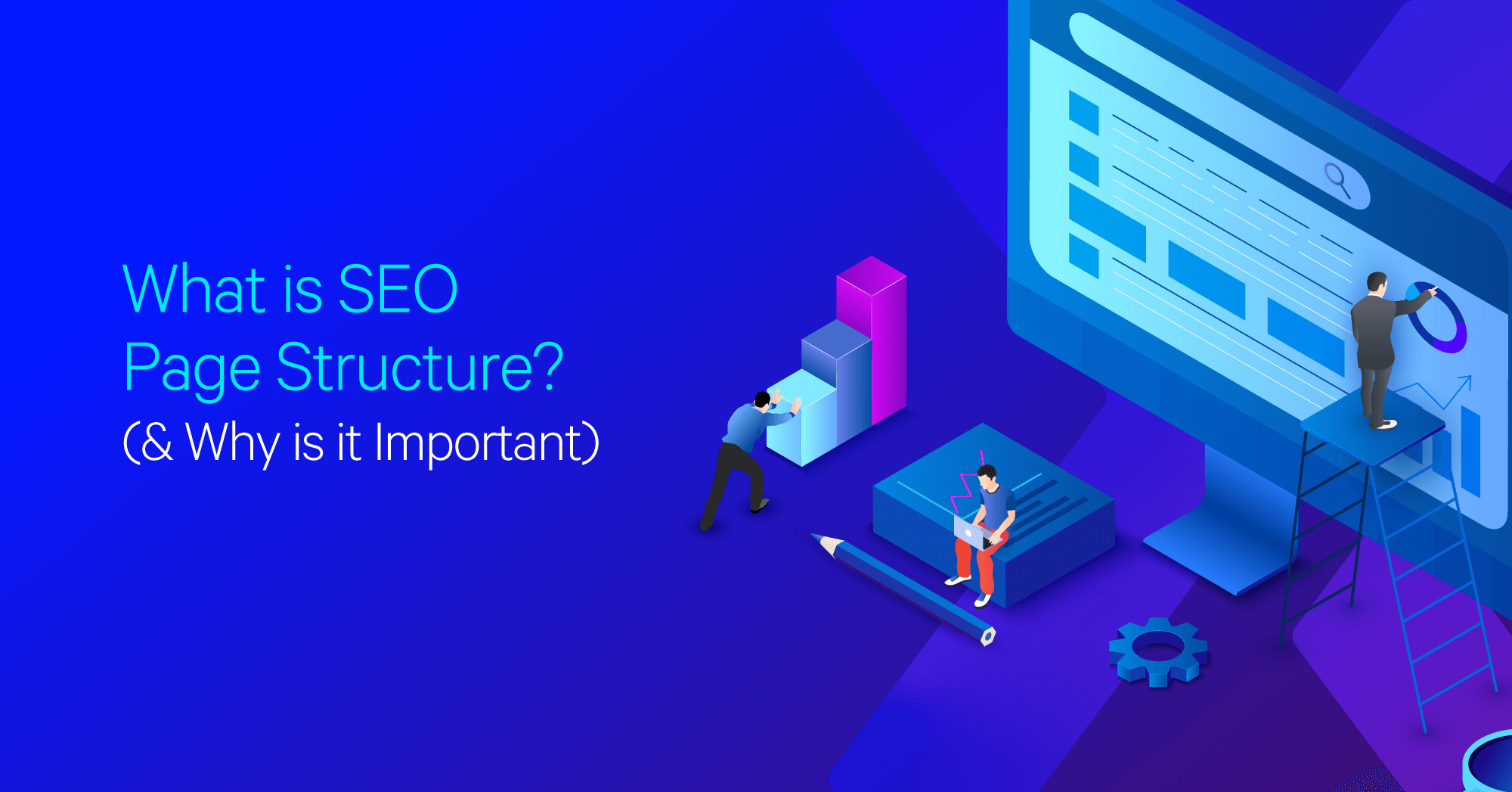
Hand off the toughest tasks in SEO, PPC, and content without compromising quality
Explore ServicesA website without structure may as well be no website at all.
A website with good structure helps users find where they want to go, making it more likely they lead to conversion. It also helps search engines crawl your website so they better understand your content, which can improve your rankings.
Want to know how to come up with an SEO friendly website structure? It’s not as difficult as you think. There are best practices for it that are easy to understand and follow once you know them.
Here’s a quick guide on what SEO page structure is and why it’s important.
What Is Site Structure?
Website structure is how you arrange all of the pages and content on your website.
For pages it may look something like this:
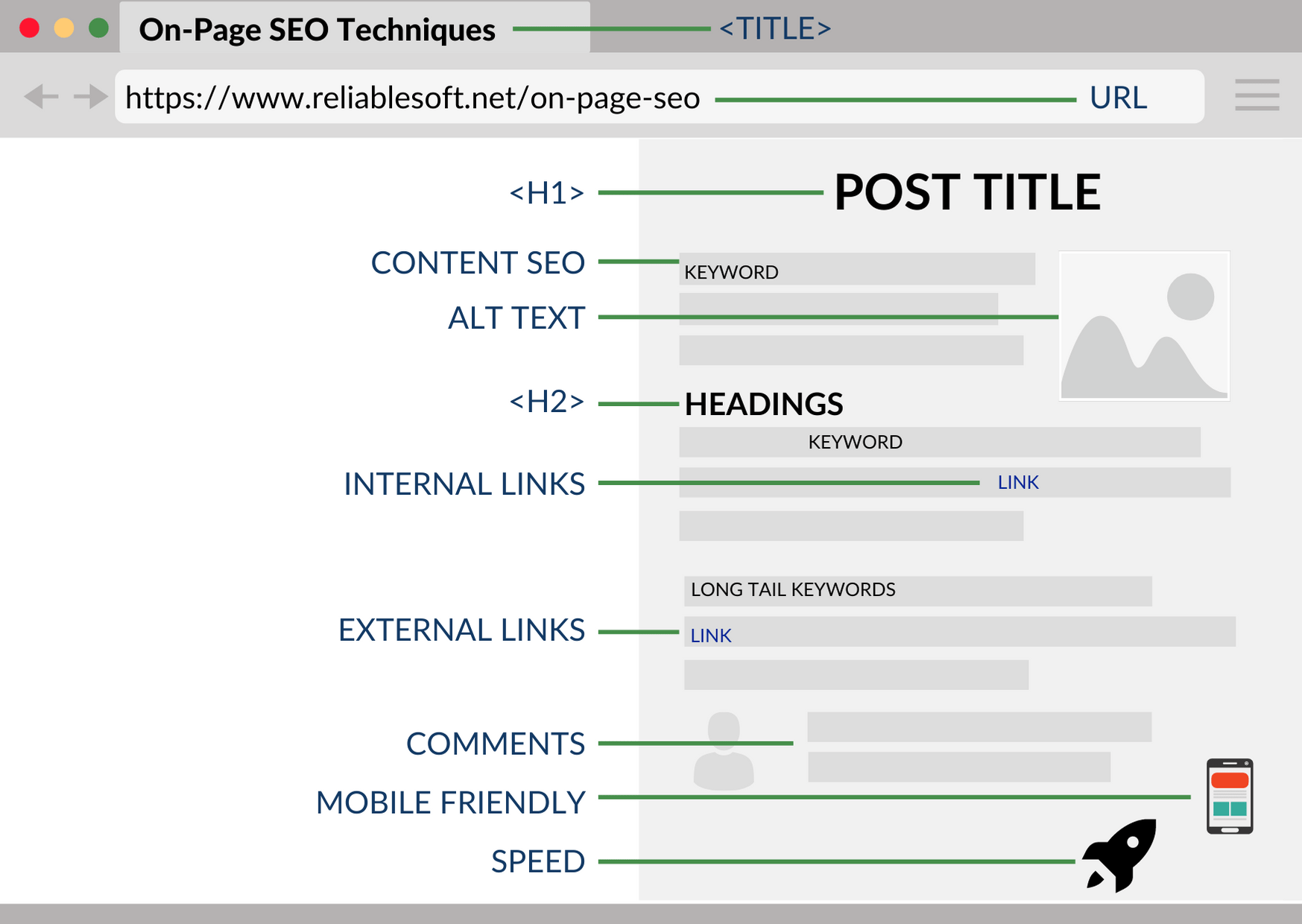
Source: https://www.reliablesoft.net/what-is-search-engine-optimization-and-why-is-it-important/
Whereas for the whole site, it may look more like this:
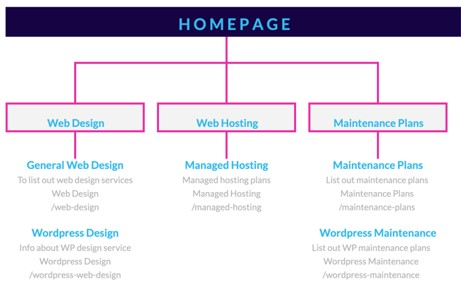
Every website has a general purpose and topic clusters. To make it easier for people to navigate the different pages and parts of your website, you can arrange them into relevant groups.
For example, a blog about health and nutrition can create page groups by exercise routines, food or diet types, and so on.
Website structure is about how you build those groups into your site.
Why is your site structure important?
There are two reasons why having good structure is important for the success of your website.
Reason #1 – Improves usability + UX 🤗
First, it greatly helps improve the usability and user experience of your website.
If your website is easier to navigate, you’ll have more return traffic, longer sessions, and more conversions.
Reason #2 – Helps Google understand your site 🤖
Second, good structure helps search engines like Google know what your website is about.
It can find more pages relevant to each other and understand what information you have to offer users. So when people search for information that you cover, you will appear higher in the results.
So what? Why is this important?
Let’s say someone comes to your health and nutrition blog because they want to look up new recipe ideas. If your content is just a poorly organized mess, they won’t be able to quickly and easily find as many recipes as they want.
They’ll likely leave and check another site. But having your recipes grouped together, with visible links to that section of your site, makes it easy for them to find more.
How To Structure (The Perfect) SEO Page
So far, we’ve explored structure in terms of a whole website. But what about setting up just a page to get the most from SEO?
With Google looking at over 200 ranking factors how do you know which ones to focus on?
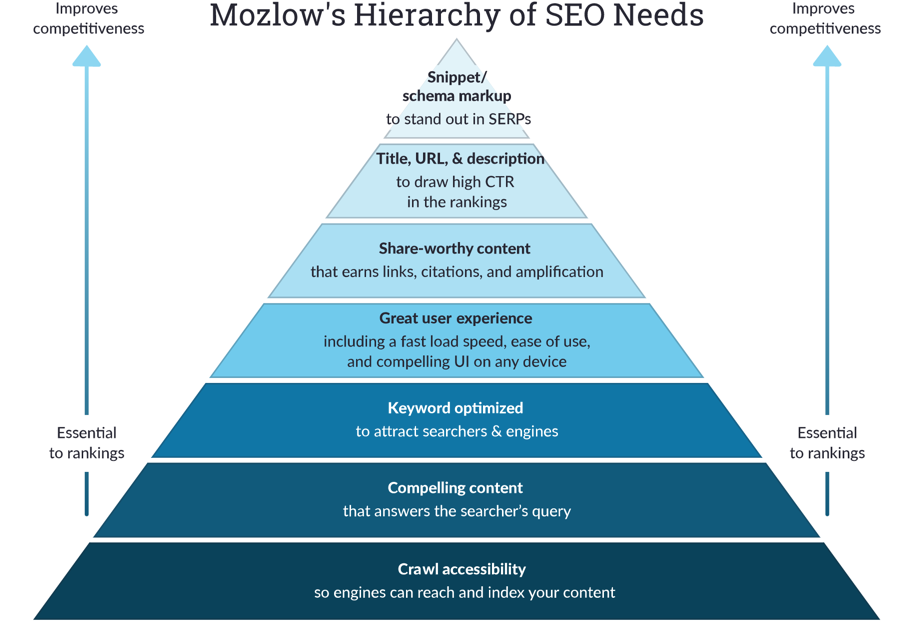
Source: https://moz.com/beginners-guide-to-seo
To speed things up, use this:
14 SEO Page Structure Best Practices
Here’s how to optimise your pages:
- SEO-friendly URLs – aim for 3 – 5 words
- Optimised page title – include your keyword + keep to 55 characters (approx)
- H1 tags – include your keyword (or variation of it) in your first heading
- Subheadings – use H2, H3 etc tags to break up and structure your page
- Meta description – write one to entice people to click (even though Google may write their own)
- Use visuals – add relevant images, videos, GIFs to reduce bounce rate and increase time on site
- Optimise images – include relevant file names + ALT tags
- External links – link out to external authority sites
- Body content – include your main keyword + related keywords
- Topic coverage – make sure you cover the topic fully (hint: use tools like Clearscope or Frase)
- Page speed – make sure the page loads fast (under 4 seconds ideally)
- Social – add OpenGraph tags and social sharing buttons
- Word count – write enough to cover the topic
- Mobile – make sure the page works on mobile devices
This list is obviously not definitive. You can optimise a page in lots of ways. But if you follow the items listed out above, you can’t go far wrong.
How to Set Up the Structure of Your Site
Now it’s time to learn the best practices on how to structure a website.
TLDR: Structuring Your Site (for SEO) 🔥
These steps and tips are all the basics you need to organize your site better:
- Step 1: Plan out you ideal site structure
- Step 2: Create your homepage
- Step 3: Create a logical navigation menu
- Step 4: Plan out taxonomies and URL structures
Need more info? Let’s go:
Step 1: Ideal site structure
Let’s say you’re building a website from the beginning. You know all the information you want to include already.
How would you want to arrange all the different pages you are going to create?
You generally want to create a funnel for the content on your site, starting from the most broad to the most specific:
- Home page — the most general information on your site.
- Categories or content groups — introducing the different topical categories.
- Individual pages and posts — including the most specific and in-depth information on your site.
Depending on how big your website is, you can also create sub-categories. It helps to create a rough website outline to think through how to organize it all.
The end result of your organization should look something like this:
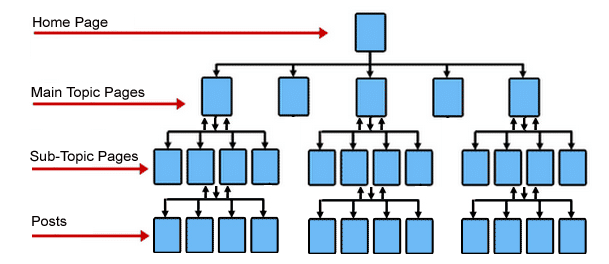
Source: https://wiseseo.guru/what-is-the-best-site-structure
Step 2: Your homepage
Your home page represents the top of your funnel.
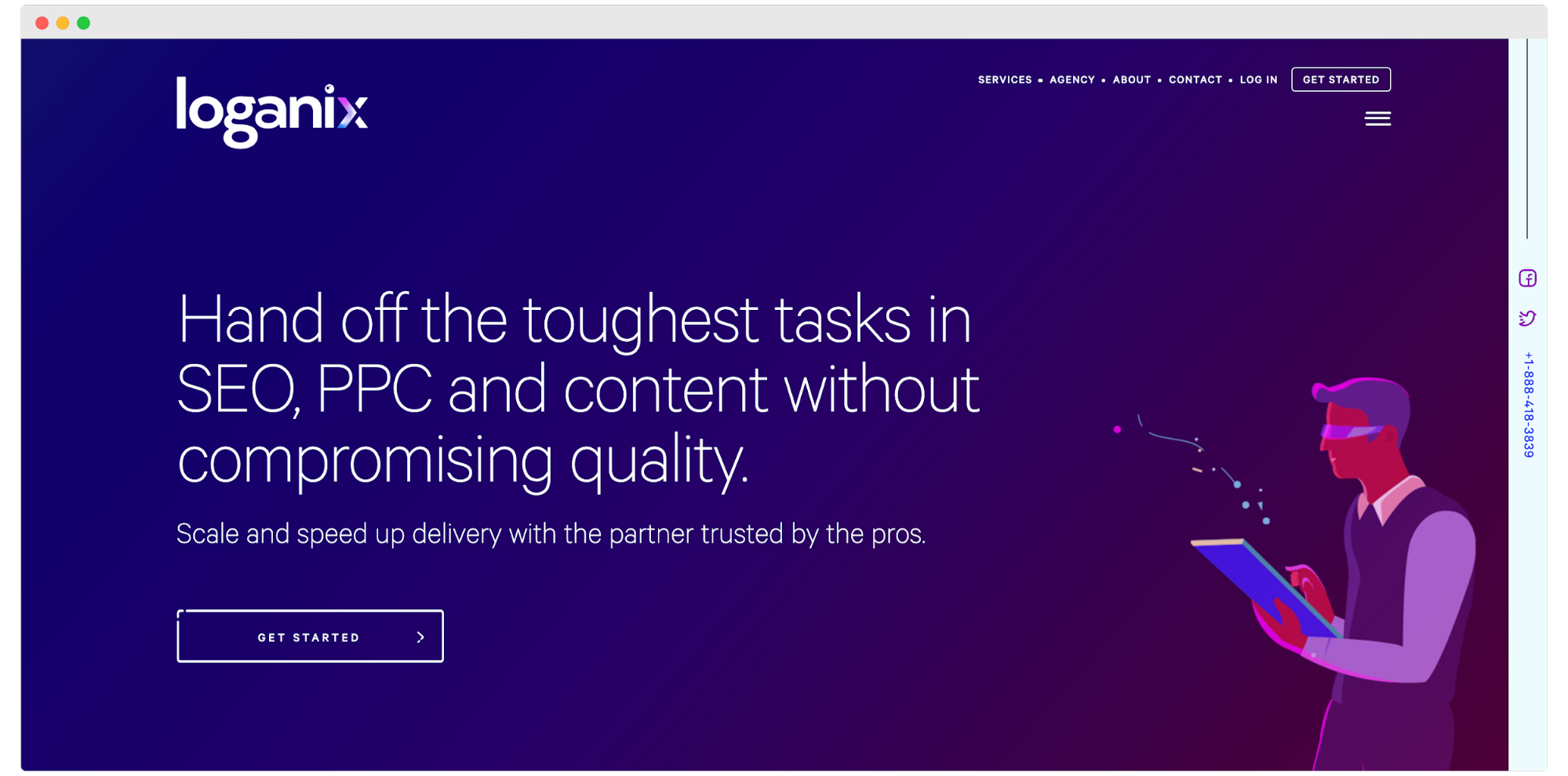
It should not go into much detail, but instead introduce all of the main topics or groups of content on your website. You can think of your home page like a shopping mall.
Everyone who comes to your website may want to go to different parts of your website. Rather than try and answer any specific question, you should have links to all the different topics.
You’re starting to funnel your users to the different parts of your site that they want to go to.
Step 3: Navigation
The next step is to create ways for people to navigate through your site, according to the structure and categories you created from step one.
There are three main ways to accomplish this on your site:
- Header menus – have a menu in the header part of your site that links to each of the main categories.
- Footer menus – you can also have links in your footer menu.
- Breadcrumbs – add links at the top of the page to each level of the structure, from the current page to the home page.
As an example, look at how we structured our Loganix website header menu:
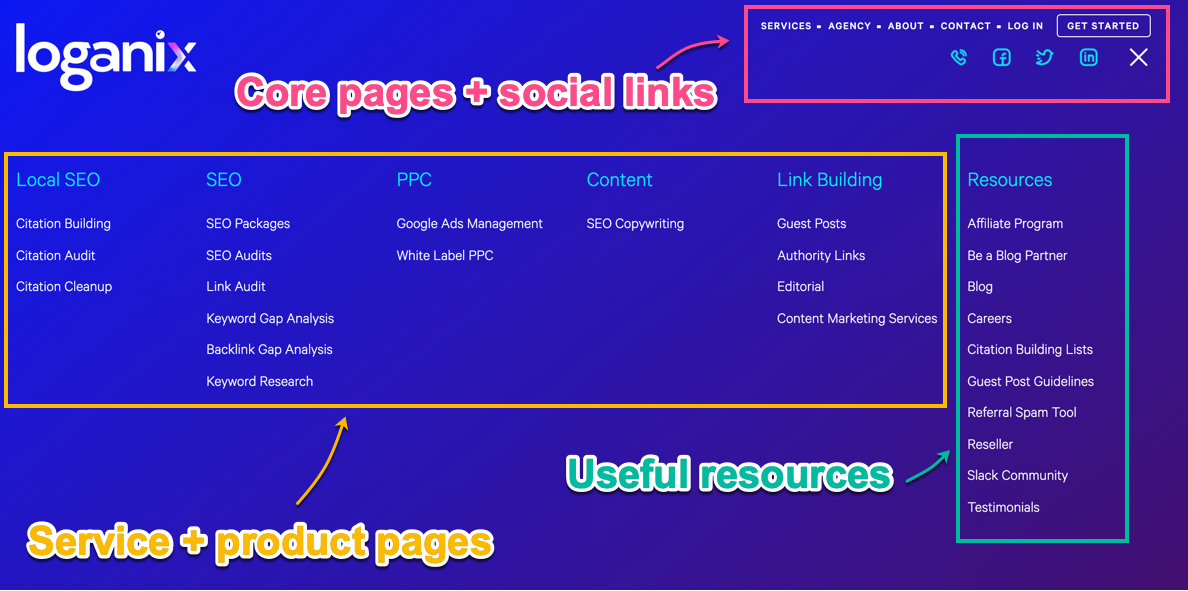
Step 4: Taxonomies
Most content marketing systems like WordPress have what is called a “taxonomy” tool to group your content together.
The idea is to organize your pages based on things they have in common.
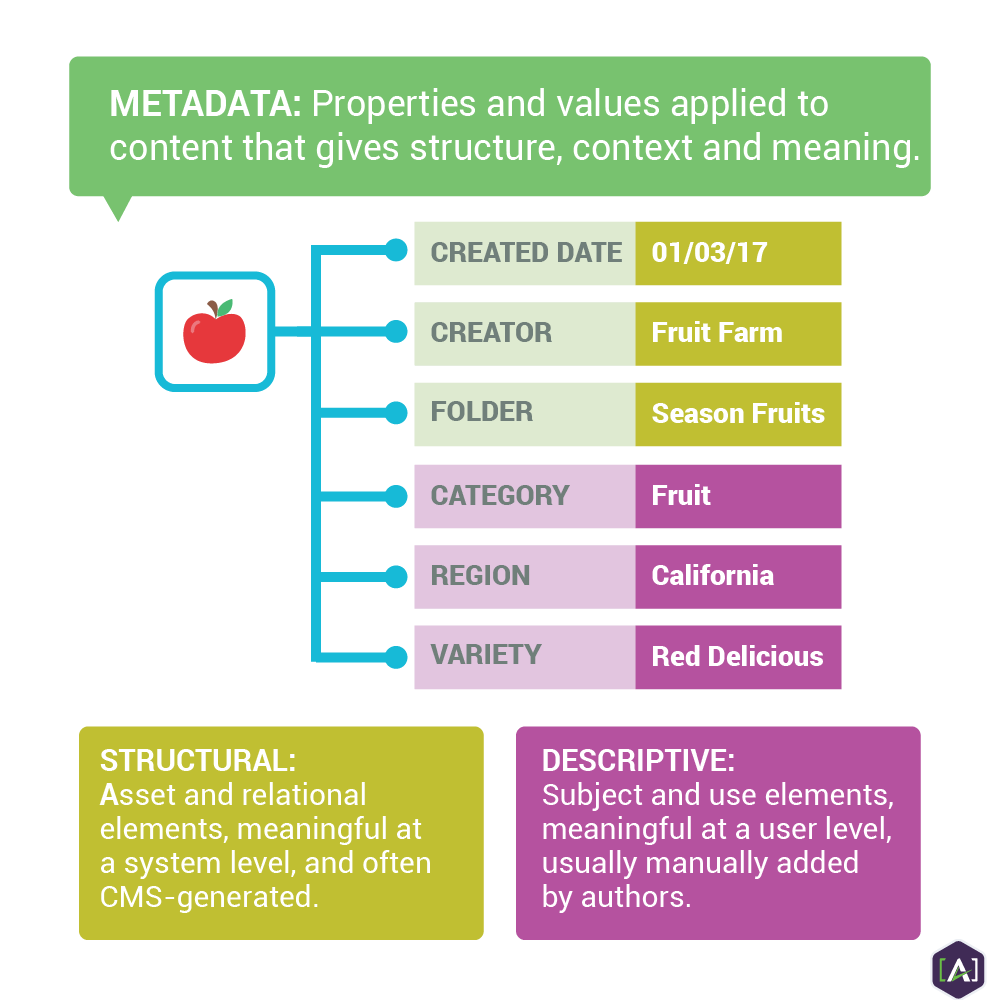
Source: https://www.seoptimer.com/blog/website-taxonomy/
This is useful for blogs and websites that have a lot of content, to help users find similar content in different ways.
There are two such functions that you can make use of:
- Categories – group your blog posts, product pages, or service pages into categories and subcategories.
- Tags – attach keywords for the information your page covers, so when a user clicks they can find more pages with the same tag.
It’s a good idea not to go overboard with either categories or tags.
Remember: the goal is to have a website that’s easy to navigate.
If you have dozens of categories, subcategories and tags you won’t make it any easier for users to find the information they want.
Using Contextual Internal Linking to Help Site Structure
Not to be confused with contextual backlinks, contextual internal links are another way to add structure to your site.
They are another way to help users find more useful and relevant information.
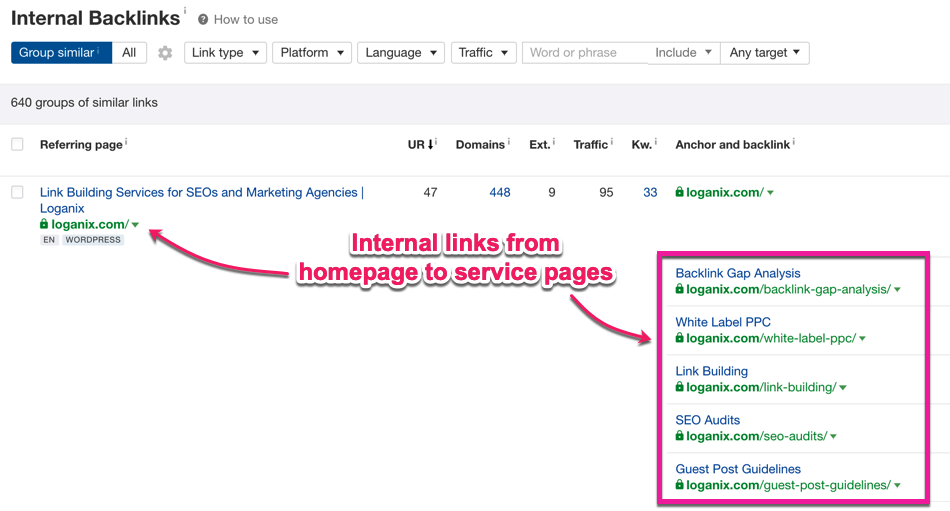
As you group pages together into categories, you will have a set of pages that covers similar topics.
There’s a good chance that if someone is interested in one page in that category, they could be interested in others too. Where it makes sense to do so, you should add links to other relevant pages.
This helps users access more pages, stay on your site longer, and signal to Google that people like your site. It also means you can direct link juice and users towards your more important pages, category pages and other relevant content.
Internal links help search engines find new content. So use them in your site architecture.
How Landing Pages Reinforce Structure
Not everyone will first come to your website on the home page.
If they search for specific pieces of information, Google may jump right to the bottom of your funnel and show them your most in-depth pages.
This is where you need to have an idea about search intent for specific keywords.
Optimize for Intent
Consider these questions for first-time users (and crawlers) who click-through from the SERPs and are viewing your web pages for the first time:
- Are people looking for information, or to make a transaction?
- Are they researching, or have they already done their research?
- Are they beginners to a topic, or experts?
Once you know what searchers are looking for, you can reinforce the structure of your website on the following types of landing pages:
- Service pages – describe the information about the service and link to related services and information.
- Product pages – have only as much content as you need to describe the product, and have breadcrumbs to the rest of your online store.
- Informational guides – provide as much quality and in-depth content on a specific topic as you can so users are completely satisfied.
The idea is that even though someone lands on your website at the bottom of a topical funnel, they can still navigate through it with ease.
5 Tips for a Good Site Structure
Having a good structure for your website is not a one-time thing.
Over time, your website will change and evolve. You will make new pages, or update existing ones. Services and products will come and go. Old information will become outdated.
As a result, you will need to constantly stay on top of how your website is structured in smaller ways.
TLDR: SEO Site Structure Best Practices 🔥
Do things like the following:
- Evaluate your navigation menu
- Rethink your taxonomy + URL structure
- Clean up outdated content
- Avoid keyword cannibalization
- Don’t forget the basics
Let’s check out these SEO site structure tips in more detail:
1. Evaluate your navigation menu
You may find that, over time, some topics your website used to cover aren’t relevant anymore.
It could be a kind of product that you don’t sell anymore, or information you provided that is now out of date.
Or maybe you just want to push users to check out single pages. That’s what we did at Loganix with our nav:

Some questions to ask yourself about your navigation menu:
- Make sure you look at your menus every once in a while, and ask if it still makes sense?
- Do you need to update the labels, or the pages under each category?
- Do you need to make new categories, or remove old ones?
Doing this helps you stay on top of things, so your structure is always in tip top shape.
2. Rethink your taxonomy + URL structure
Apply the same semi-regular check to your website’s taxonomy (your page categories and tags) AND your URL structure.
You may find that over time you will have to make the same updates to taxonomies as you do your menus.
Don’t forget your URLs either:
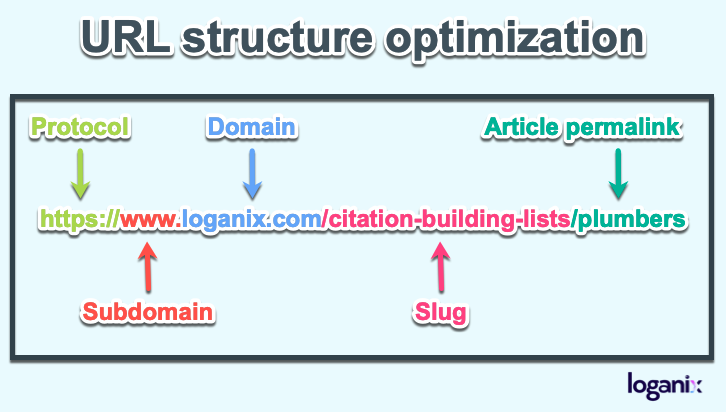
3. Clean up outdated content
Just because one page you wrote five to ten years ago used to bring in a lot of traffic, doesn’t mean it’s fine to leave it the way it was.
Facts, best practices and information on your site will eventually grow old, stale, and lose relevance.
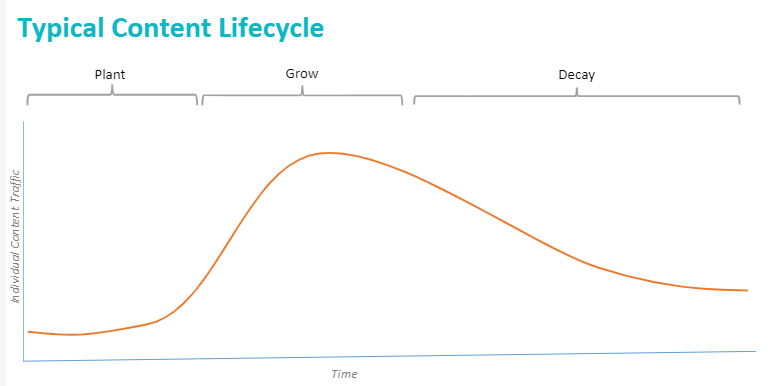
Source: https://www.seoclarity.net/blog/content-refresh
For your big pages on evergreen topics, you can get away with updating all your sources, images, and facts over time to make sure it stays relevant.
For others, you should look at making new pages to replace them. You can also redirect or link to the new page from the old one.
Quality content + SEO research ✍️
You tell us the keywords you want to target, and we’ll analyze the SERPs, research your keywords then write the content your audience (+ Google) wants to see.
4. Avoid keyword cannibalization
One of the common issues over time that can erode your website structure over time is making new pages that covers the same information as another.
This confuses both Google and your users.

Source: https://moz.com/blog/how-to-solve-keyword-cannibalization
For search engines, they won’t be able to know that one page is the one you want people to see.
So in the end, your influence gets split between the two and they both rank poorly. Instead, make sure you update an existing page or redirect the old one so users and search engines all go to one.
5. Don’t forget the basics
It’s not exciting but it’s important: get your house in order.
As a webmaster or marketer, it is easy to get carried away with tweaking HTML, CSS and planning out the best site structure in a spreadsheet.
This is important but don’t neglect the basics.
You know what I’m talking about, add ALT text to those images, remove duplicate content, rewrite those meta descriptions and title tags.
Give search engine crawlers what they want.
Some SEO Basics
- URL structure – make sure you have a logical structure setup with relevant anchor text that’s user friendly- and Googlebot-friendly
- Content strategy – make sure you’ve done keyword research and mapped it to pages your audience (and Google) wants to see.
- Technical SEO issues – make sure you fix up any of those issues which could cause indexing issues
- Page speed – make sure your site isn’t super slow.
SEO is all about doing the basics over and over again, site structure is no different
Summary
Now that you know the importance of site structure and how it works, you can start improving your own site hierarchy.
In the end, both your users and search engines will show their appreciation with more traffic, conversions and better rankings.
It can take a lot of work to get started, but once you finish you will find that maintaining it takes far less work over time.
Hand off the toughest tasks in SEO, PPC, and content without compromising quality
Explore ServicesWritten by Adam Steele on January 16, 2021
COO and Product Director at Loganix. Recovering SEO, now focused on the understanding how Loganix can make the work-lives of SEO and agency folks more enjoyable, and profitable. Writing from beautiful Vancouver, British Columbia.





